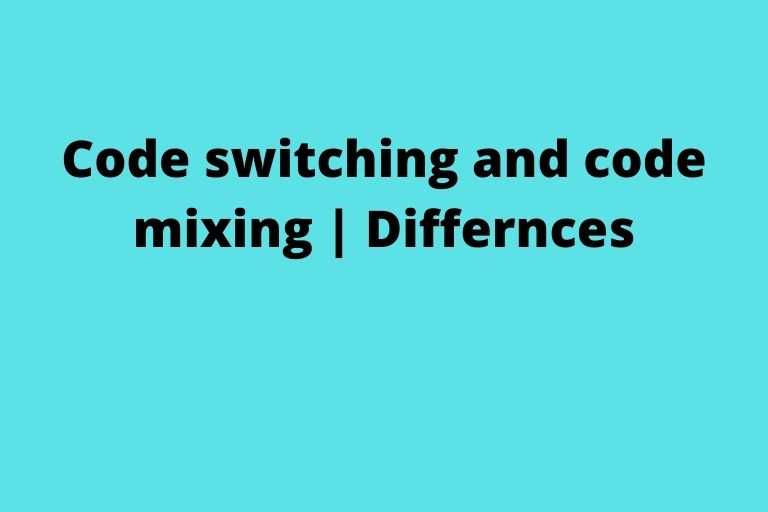Code switching and code mixing is common now a days because of language contacts day by day. Many languages are getting closure and hence languages are getting contaminated. Due to bilingualism and multilingualism languages are getting mixture with each other hence creative a variety of languages. When speakers alternate two or more languages in the same conversation is a code switching. In it the speaker starts with a language and ends with a different language.( switching from one language to another.) in it the speakers use variety of language codes( language) are generally shared by the speakers without grammatical errors. The feature of code switching is that the users use full clauses and switch between two or more languages.

Examples:
Code mixing:
Code mixing refers to the transfer of linguistic elements or words from one language to another or mixed together.
Code-mixing is also a term which is studied in sociolinguistic. In code mixing the users who are multilingual or bilingual use different codes from different language and mixed them with other languages. This is very common in present days because of language contact. It generally takes place where the speaker and listeners understand more than two languages. In code mixing the speakers use words from other languages which is also known lexical variation in language. The user of language of language mix lexical items (words) with spoken languages.
For example:
- Yesterday I went to market and bought some vegetables, and aalu, Gobi etc. (English + Hindi)
Difference:
In present day code switching and code mixing are very common because of the language contact. Code switching and mixing are two linguistic devices which can be considered as a different manifestation.
- Firstly code switching is the ability to switch or change elemets from one language to another. For example in English conversation the speaker change or switch from English to Spanish. According to the function or situation.
- One the other hand code mixing refers to the transferring linguistic units from one code into another. This transferring results for developing a new code of linguistic interaction.
Example:
